Delta Airlines 2014 Annual Report Download - page 45
Download and view the complete annual report
Please find page 45 of the 2014 Delta Airlines annual report below. You can navigate through the pages in the report by either clicking on the pages listed below, or by using the keyword search tool below to find specific information within the annual report.-
 1
1 -
 2
2 -
 3
3 -
 4
4 -
 5
5 -
 6
6 -
 7
7 -
 8
8 -
 9
9 -
 10
10 -
 11
11 -
 12
12 -
 13
13 -
 14
14 -
 15
15 -
 16
16 -
 17
17 -
 18
18 -
 19
19 -
 20
20 -
 21
21 -
 22
22 -
 23
23 -
 24
24 -
 25
25 -
 26
26 -
 27
27 -
 28
28 -
 29
29 -
 30
30 -
 31
31 -
 32
32 -
 33
33 -
 34
34 -
 35
35 -
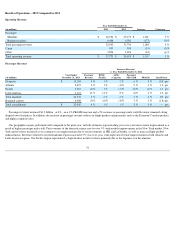 36
36 -
 37
37 -
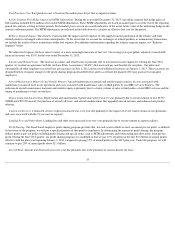 38
38 -
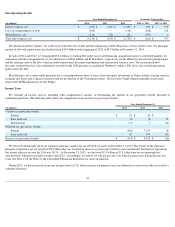 39
39 -
 40
40 -
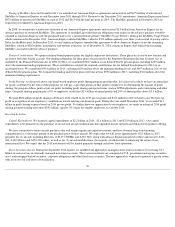 41
41 -
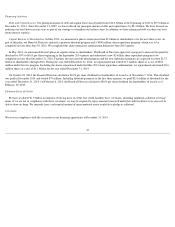 42
42 -
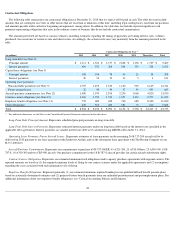 43
43 -
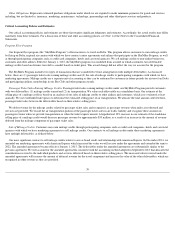 44
44 -
 45
45 -
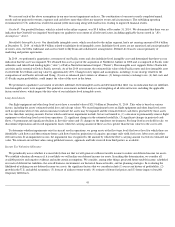 46
46 -
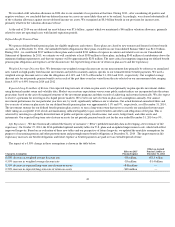 47
47 -
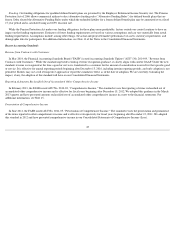 48
48 -
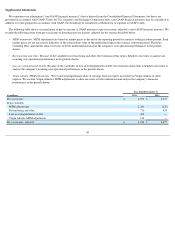 49
49 -
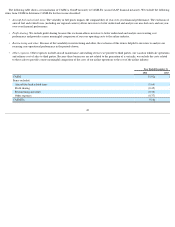 50
50 -
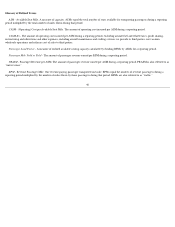 51
51 -
 52
52 -
 53
53 -
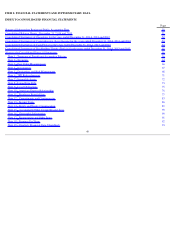 54
54 -
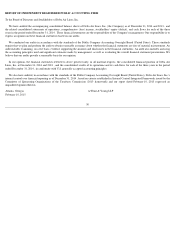 55
55 -
 56
56 -
 57
57 -
 58
58 -
 59
59 -
 60
60 -
 61
61 -
 62
62 -
 63
63 -
 64
64 -
 65
65 -
 66
66 -
 67
67 -
 68
68 -
 69
69 -
 70
70 -
 71
71 -
 72
72 -
 73
73 -
 74
74 -
 75
75 -
 76
76 -
 77
77 -
 78
78 -
 79
79 -
 80
80 -
 81
81 -
 82
82 -
 83
83 -
 84
84 -
 85
85 -
 86
86 -
 87
87 -
 88
88 -
 89
89 -
 90
90 -
 91
91 -
 92
92 -
 93
93 -
 94
94 -
 95
95 -
 96
96 -
 97
97 -
 98
98 -
 99
99 -
 100
100 -
 101
101 -
 102
102 -
 103
103 -
 104
104 -
 105
105 -
 106
106 -
 107
107 -
 108
108 -
 109
109 -
 110
110 -
 111
111 -
 112
112 -
 113
113 -
 114
114 -
 115
115 -
 116
116 -
 117
117 -
 118
118 -
 119
119 -
 120
120 -
 121
121 -
 122
122 -
 123
123 -
 124
124 -
 125
125 -
 126
126 -
 127
127 -
 128
128 -
 129
129 -
 130
130 -
 131
131 -
 132
132 -
 133
133 -
 134
134 -
 135
135 -
 136
136 -
 137
137 -
 138
138 -
 139
139 -
 140
140 -
 141
141 -
 142
142 -
 143
143 -
 144
144 -
 145
145 -
 146
146 -
 147
147 -
 148
148 -
 149
149 -
 150
150 -
 151
151 -
 152
152 -
 153
153 -
 154
154 -
 155
155 -
 156
156 -
 157
157 -
 158
158 -
 159
159 -
 160
160 -
 161
161 -
 162
162 -
 163
163 -
 164
164 -
 165
165 -
 166
166 -
 167
167 -
 168
168 -
 169
169 -
 170
170 -
 171
171 -
 172
172 -
 173
173 -
 174
174 -
 175
175 -
 176
176 -
 177
177 -
 178
178 -
 179
179 -
 180
180 -
 181
181 -
 182
182 -
 183
183 -
 184
184 -
 185
185 -
 186
186 -
 187
187 -
 188
188 -
 189
189 -
 190
190 -
 191
191 -
 192
192 -
 193
193 -
 194
194 -
 195
195 -
 196
196 -
 197
197 -
 198
198 -
 199
199 -
 200
200 -
 201
201 -
 202
202 -
 203
203 -
 204
204 -
 205
205 -
 206
206 -
 207
207 -
 208
208 -
 209
209 -
 210
210 -
 211
211 -
 212
212 -
 213
213 -
 214
214 -
 215
215 -
 216
216 -
 217
217 -
 218
218 -
 219
219 -
 220
220 -
 221
221 -
 222
222 -
 223
223 -
 224
224 -
 225
225 -
 226
226 -
 227
227 -
 228
228 -
 229
229 -
 230
230 -
 231
231 -
 232
232 -
 233
233 -
 234
234 -
 235
235 -
 236
236 -
 237
237 -
 238
238 -
 239
239 -
 240
240 -
 241
241 -
 242
242 -
 243
243 -
 244
244 -
 245
245 -
 246
246 -
 247
247 -
 248
248 -
 249
249 -
 250
250 -
 251
251 -
 252
252 -
 253
253 -
 254
254 -
 255
255 -
 256
256 -
 257
257 -
 258
258 -
 259
259 -
 260
260 -
 261
261 -
 262
262 -
 263
263 -
 264
264 -
 265
265 -
 266
266 -
 267
267 -
 268
268 -
 269
269 -
 270
270 -
 271
271 -
 272
272 -
 273
273 -
 274
274 -
 275
275 -
 276
276 -
 277
277 -
 278
278 -
 279
279 -
 280
280 -
 281
281 -
 282
282 -
 283
283 -
 284
284 -
 285
285 -
 286
286 -
 287
287 -
 288
288 -
 289
289 -
 290
290 -
 291
291 -
 292
292 -
 293
293 -
 294
294 -
 295
295 -
 296
296 -
 297
297 -
 298
298 -
 299
299 -
 300
300 -
 301
301 -
 302
302 -
 303
303 -
 304
304 -
 305
305 -
 306
306 -
 307
307 -
 308
308 -
 309
309 -
 310
310 -
 311
311 -
 312
312 -
 313
313 -
 314
314 -
 315
315 -
 316
316 -
 317
317 -
 318
318 -
 319
319 -
 320
320 -
 321
321 -
 322
322 -
 323
323 -
 324
324 -
 325
325 -
 326
326 -
 327
327 -
 328
328 -
 329
329 -
 330
330 -
 331
331 -
 332
332 -
 333
333 -
 334
334 -
 335
335 -
 336
336 -
 337
337 -
 338
338 -
 339
339 -
 340
340 -
 341
341 -
 342
342 -
 343
343 -
 344
344 -
 345
345 -
 346
346 -
 347
347 -
 348
348 -
 349
349 -
 350
350 -
 351
351 -
 352
352 -
 353
353 -
 354
354 -
 355
355 -
 356
356 -
 357
357 -
 358
358 -
 359
359 -
 360
360 -
 361
361 -
 362
362 -
 363
363 -
 364
364 -
 365
365 -
 366
366 -
 367
367 -
 368
368 -
 369
369 -
 370
370 -
 371
371 -
 372
372 -
 373
373 -
 374
374 -
 375
375 -
 376
376 -
 377
377 -
 378
378 -
 379
379 -
 380
380 -
 381
381 -
 382
382 -
 383
383 -
 384
384 -
 385
385 -
 386
386 -
 387
387 -
 388
388 -
 389
389 -
 390
390 -
 391
391 -
 392
392 -
 393
393 -
 394
394 -
 395
395 -
 396
396 -
 397
397 -
 398
398 -
 399
399 -
 400
400 -
 401
401 -
 402
402 -
 403
403 -
 404
404 -
 405
405 -
 406
406 -
 407
407 -
 408
408 -
 409
409 -
 410
410 -
 411
411 -
 412
412 -
 413
413 -
 414
414 -
 415
415 -
 416
416 -
 417
417 -
 418
418 -
 419
419 -
 420
420 -
 421
421 -
 422
422 -
 423
423 -
 424
424 -
 425
425 -
 426
426 -
 427
427 -
 428
428 -
 429
429 -
 430
430 -
 431
431 -
 432
432 -
 433
433 -
 434
434 -
 435
435 -
 436
436 -
 437
437 -
 438
438 -
 439
439 -
 440
440 -
 441
441 -
 442
442 -
 443
443 -
 444
444 -
 445
445 -
 446
446 -
 447
447 -
 448
448 -
 449
449 -
 450
450 -
 451
451 -
 452
452 -
 453
453 -
 454
454 -
 455
455 -
 456
456
 |
 |

In September 2013, we modified our marketing agreements with American Express that required us to change the accounting method for recording
SkyMiles sold. Under the previous method, the embedded premium or discount was allocated to the residual products or services in a combined
transaction. The new method allocates consideration received based on the relative selling price of each product or service. We determined our best
estimate of the selling prices by considering discounted cash flow analysis using multiple inputs and assumptions, including: (1) the expected number
of miles awarded and number of miles redeemed, (2) the rate at which we sell mileage credits to other airlines, (3) published rates on our website for
baggage fees, access to Delta Sky Club lounges and other benefits while traveling on Delta and (4) brand value. The impact of adopting the relative
selling price method re-allocated a portion of the embedded discount to the travel component, lowering the deferral rate we use to record miles sold
under the agreements and increasing revenue recognized on the remaining deliverables.
We recognize revenue as we deliver each sales element. We defer the travel deliverable (miles) as part of frequent flyer deferred revenue and
recognize passenger revenue as the mileage credits are used for travel. The revenue allocated to the remaining deliverables is recorded in other
revenue. We recognize the revenue for these services as they are performed.
Breakage. For mileage credits that we estimate are not likely to be redeemed (“breakage”), we recognize the associated value proportionally during
the period in which the remaining mileage credits are expected to be redeemed. Management uses statistical models to estimate breakage based on
historical redemption patterns. A change in assumptions as to the period over which mileage credits are expected to be redeemed, the actual
redemption activity for mileage credits or the estimated fair value of mileage credits expected to be redeemed could have a material impact on our
revenue in the year in which the change occurs and in future years. At December 31, 2014 , the aggregate deferred revenue balance associated with the
SkyMiles Program was $4.2 billion . A hypothetical 1% change in the number of outstanding miles estimated to be redeemed would result in a $28
million impact on our deferred revenue liability at December 31, 2014 .
Goodwill and Indefinite-Lived Intangible Assets
We apply a fair value-based impairment test to the carrying value of goodwill and indefinite-lived intangible assets on an annual basis (as of
October 1) and, if certain events or circumstances indicate that an impairment loss may have been incurred, on an interim basis. We assess the value of
our goodwill and indefinite-lived assets under either a qualitative or quantitative approach. Under a qualitative approach, we consider various market
factors, including the key assumptions listed below. We analyze these factors to determine if events and circumstances have affected the fair value of
goodwill and indefinite-lived intangible assets. If we determine that it is more likely than not that the asset may be impaired, we use the quantitative
approach to assess the asset's fair value and the amount of the impairment. Under a quantitative approach, we calculate the fair value of the asset using
the key assumptions listed below. If the asset's carrying value exceeds its fair value calculated using the quantitative approach, we will record an
impairment charge for the difference in fair value and carrying value.
When we evaluate goodwill for impairment using a quantitative approach, we estimate the fair value of the reporting unit by considering market
capitalization and other factors. When we perform a quantitative impairment assessment of our indefinite-lived intangible assets, fair value
is estimated
based on (1) recent market transactions, where available, (2) a combination of limited market transactions and the lease savings method for certain
airport slots (which reflects potential lease savings from owning the slots rather than leasing them from another airline at market rates), (3) the royalty
method for the Delta tradename (which assumes hypothetical royalties generated from using our tradename) or (4) projected discounted future cash
flows (an income approach).
Key Assumptions. The key assumptions in our impairment tests include: (1) forecasted revenues, expenses and cash flows, (2) terminal period
revenue growth and cash flows, (3) an estimated weighted average cost of capital, (4) assumed discount rates depending on the asset and (5) a tax rate.
These assumptions are consistent with those hypothetical market participants would use. Since we are required to make estimates and assumptions
when evaluating goodwill and indefinite-lived intangible assets for impairment, actual transaction amounts may differ materially from these estimates.
In addition, we consider the amount by which the intangible assets' fair value exceeded their carrying value in the most recent fair value measurement
calculated using a quantitative approach.
Changes in certain events and circumstances could result in impairment. Factors which could cause impairment include, but are not limited to, (1)
negative trends in our market capitalization, (2) reduced profitability resulting from lower passenger mile yields or higher input costs (primarily related
to fuel and employees), (3) lower passenger demand as a result of weakened U.S. and global economies, (4) interruption to our operations due to a
prolonged employee strike, terrorist attack, or other reasons, (5) changes to the regulatory environment (e.g., diminished slot restrictions or additional
Open Skies agreements), (6) competitive changes by other airlines and (7) strategic changes to our operations leading to diminished utilization of the
intangible assets.
40
